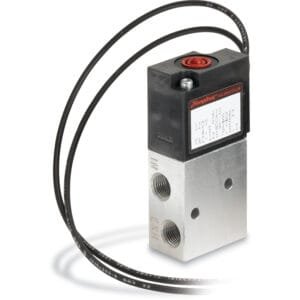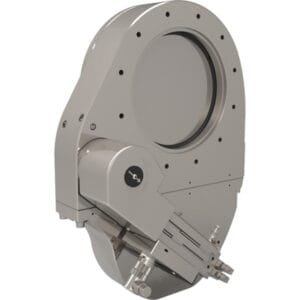KF (QF) HV Blank Flanges (Aluminum 6061-T6): Lightweight and Effective Sealing for High-Vacuum Infrastructure
KF (QF) HV Blank Flanges (Aluminum 6061-T6) are lightweight, high-precision components used to cap unused ports in high-vacuum (HV) systems. Designed in accordance with ISO standards for Klein Flansche (KF) fittings, these blank flanges are compatible with all standard KF hardware and provide a reliable vacuum seal for foreline or through-line plumbing, as well as for simple HV chamber terminations.
Manufactured from Aluminum 6061-T6, these KF (QF) HV blank flanges offer a highly practical solution where low mass, corrosion resistance, and ease of handling are essential. Compared to stainless steel, aluminum is significantly lighter, making it especially suitable for mobile, space-sensitive, or modular vacuum systems used in research labs, vacuum packaging setups, analytical instrumentation, and prototype environments.
Each KF (QF) HV Blank Flange (Aluminum 6061-T6) features a flat, solid sealing face and a chamfered back surface that aligns perfectly with the o-ring assembly. When used with a KF centering ring and elastomeric o-ring, and secured via a circumferential clamp (e.g., wing-nut, thumbscrew, or over-center lever), the flange delivers a leak-tight connection that can maintain vacuum levels down to 10⁻⁸ Torr.
The aluminum construction not only reduces component weight but also offers good thermal conductivity and resistance to oxidation in dry vacuum environments. While not recommended for corrosive or chemically aggressive applications, Aluminum 6061-T6 performs reliably in most general-purpose vacuum systems and is easy to machine, handle, and assemble.
Just like all KF-based components, the sealing efficiency of KF (QF) HV Blank Flanges (Aluminum 6061-T6) is determined by the properties of the o-ring used. Most systems will operate within a thermal range of 0 °C to 120–180 °C, depending on the o-ring compound, such as Viton, Buna-N, or silicone.
TFM supplies these blank flanges in all standard sizes including KF16, KF25, KF40, and KF50, ensuring seamless integration into existing KF plumbing. These blanks are particularly useful in flexible vacuum setups where ports may need to be capped temporarily or reconfigured frequently. They also support system isolation during maintenance or staged installation.
In summary, KF (QF) HV Blank Flanges (Aluminum 6061-T6) are the go-to choice for vacuum users seeking a lightweight, corrosion-resistant, and cost-effective method to cap unused KF ports in general HV applications. Their simple design, full KF compatibility, and ease of use make them indispensable across a wide range of vacuum environments.
Ordering Table
Accessories Table
| Description | For | Per Package | Part Number |
| Cast Clamps (Aluminum) | KF10, KF16 Flanges | 1 | QF16-075-C |
| Cast Clamps (Aluminum) | KF25 Flanges | 1 | QF25-100-C |
| Cast Clamps (Aluminum) | KF40 Flanges | 1 | QF40-150-C |
| Cast Clamps (Aluminum) | KF50 Flanges | 1 | QF50-200-C |
| Lever Clamps (Aluminum) | KF10, KF16 Flanges | 1 | QF16-075-CHA |
| Lever Clamps (Aluminum) | KF25 Flanges | 1 | QF25-100-CHA |
| Lever Clamps (Aluminum) | KF40 Flanges | 1 | QF40-150-CHA |
| Centering Ring (Aluminum with Fluorocarbon O-Ring) | KF10 Flanges | 1 | QF10-050-ARV |
| Centering Ring (Aluminum with Fluorocarbon O-Ring) | KF16 Flanges | 1 | QF16-075-ARV |
| Centering Ring (Aluminum with Fluorocarbon O-Ring) | KF25 Flanges | 1 | QF25-100-ARV |
| Centering Ring (Aluminum with Fluorocarbon O-Ring) | KF40 Flanges | 1 | QF40-150-ARV |
| Centering Ring (Aluminum with Fluorocarbon O-Ring) | KF50 Flanges | 1 | QF50-200-ARV |





Reviews
There are no reviews yet.